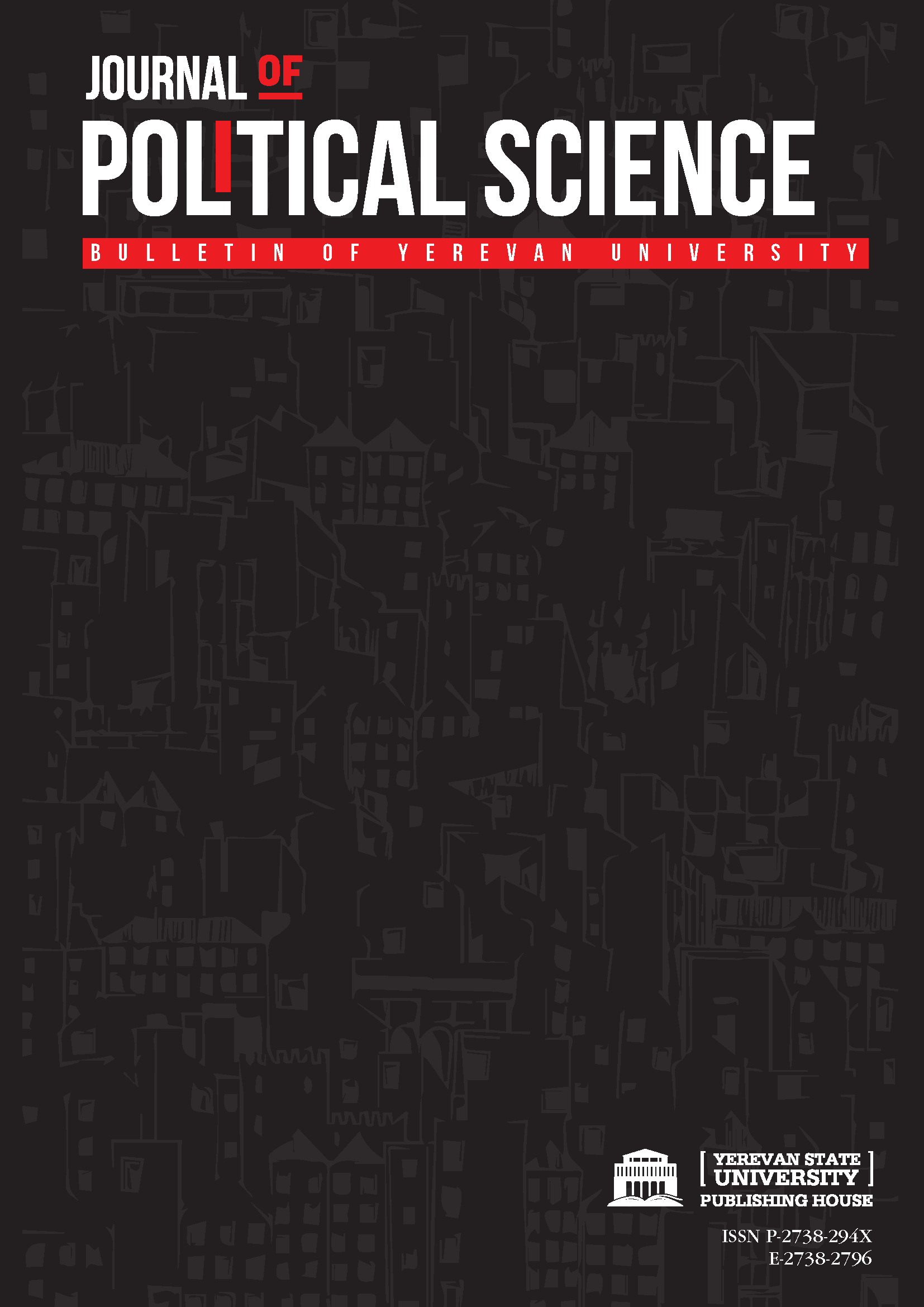Turkey as a Transport Hub: a Vision Strategy for Integrating Regional Infrastructures and Services
DOI:
https://doi.org/10.46991/JOPS/2022.1.1.011Keywords:
Transport hub, Middle Corridor, Armenia, Turkey, Russia, EU, China, Iran, UAE, PakistanAbstract
Surrounded by seas on three sides, Turkey wants to connect different seas and coastal regions by land transport corridors. Moreover, Turkey pretends to connect the Pacific, Atlantic, Indian and also Arctic Oceans by various transport corridors, which may referred to China, the EU, India and Russia accordingly. Thus, Turkey's transport strategy has 3 levels: national, regional and international.
The research objective is to reveal Turkey's prospects of becoming a transport hub, to analyze Turkey's geographical location, the favorable circumstances and obstacles, the positions of the Turkish leadership and regional and extra-regional actors. We conclude that Turkey has glimmering chances to become a transport hub both in the West-East and North-South directions, and even in their various branches.
Becoming a transport hub is very important from Turkey's point of view to be included in the top ten economically leading countries․ Likewise, it full compliances with Turkey's current ambitions։ Turkey is already a regional superpower with global ambitions, and in the long-term perspective it aspires to become a global player.
The topic is actual for Armenia, as it directly refers on it․ The aspiration of Turkey to become a transport hub can also put Armenia on the world transport map, turning it into a transport hub as well, at least in the East-West (China-Europe) direction.
References
Isik, Ahmet Faruk, and Zhiqiang Zou (2019) “China-Turkey Security Cooperation Under the Background of the ‘Belt and Road’ and the ‘Middle Corridor’ Initiatives.” Asian Journal of Middle Eastern and Islamic Studies 13(2):1-16. https://doi.org/10.1080/25765949.2019.1605572
Kadan, Tevfik (2020/2021) “The Formulation of the Blue Homeland Doctrine.” Belt & Road Initiative Quarterly (BRIQ) 2(1): 36-50. Accessed October 1, 2021. https://briqjournal.com/en/the-formulation-the-blue-homeland-doctrine.
Kenderdine, Tristan, and Péter Bucsky (2021) “Middle Corridor-Policy Development and Trade Potential of the Trans-Caspian International Transport Route.” ADBI Working Paper 1268. Tokyo: Asian Development Bank Institute. Accessed October 1, 2021. https://www.adb.org/publications/middle-corridor-policy-development-trade-potential.
Keohane, Robert O., and Joseph S. Nye (2012). Power and Interdependence. Longman: Pearson.
Tanchum, Michaël (2021a). India’s Arab-Mediterranean Corridor: A Paradigm Shift in Strategic Connectivity to Europe (South Asia Scan 14). Singapore: Institute of South Asian Studies. Accessed October 1, 2021. https://www.isas.nus.edu.sg/wp-content/uploads/2021/08/South-Asia-Scan-Aug-2021-V4.pdf.
Tanchum, Michaël (2021b). Turkey’s Maghreb-West Africa Economic Architecture: Challenges and Opportunities for the European Union (SWP Working Paper 3). Berlin. Accessed October 1, 2021. https://www.swp-berlin.org/publications/products/arbeitspapiere/CATS_Working_Paper_Nr_3_Michael_Tanchum_Turkeys_Maghreb_West_Africa_Economic_Architecture.pdf.
Xiaoxiang, Zhou, and Huang Chengfeng (2021) “Systems Evaluation for Operational Risks of International Transport Corridors: A Case Study of China-Pakistan-Iran-Turkey International Transport Corridor,.” Discrete Dynamics in Nature and Society: 1-14. https://doi.org/10.1155/2021/3438872.
Downloads
Published
Issue
Section
License
Copyright (c) 2022 Hayk Gabrielyan

This work is licensed under a Creative Commons Attribution-NonCommercial 4.0 International License.



